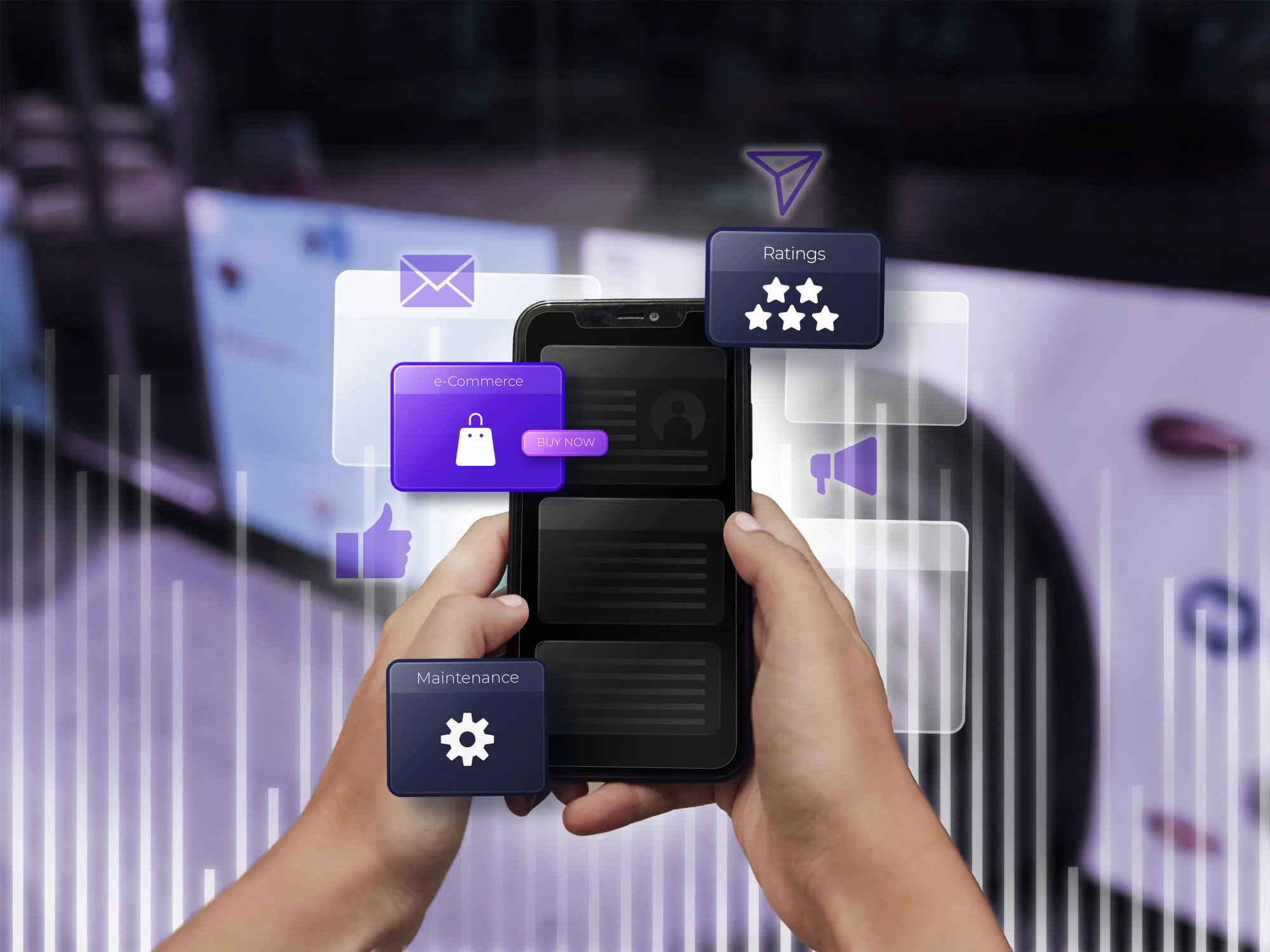In today’s fast-paced mobile world, providing a seamless and engaging customer experience is more important than ever. As mobile app users become more discerning, businesses need to find effective ways to engage them without being intrusive. In-app messaging is one of the most powerful tools to enhance user engagement and drive a positive experience.
In-app messages, which appear while users are actively using an app, provide a unique opportunity to deliver personalized content, reminders, and offers without disrupting the user experience. When implemented effectively, in-app messages can improve customer satisfaction, guide users, promote new features, and ultimately drive customer loyalty and retention.
In this blog, we’ll explore how in-app messaging works, its benefits, best practices for using it, and examples of successful implementations to help you create a more engaging customer experience for your app users.
What Are In-App Messages?
In-app messages are notifications that appear within the app interface, offering real-time, contextual communication to users. Unlike push notifications, which appear outside the app (such as on the phone’s home screen or lock screen), in-app messages appear when users are actively using the app, providing immediate and relevant content without interrupting their experience.
These messages can take various forms, such as:
- Banners: Short, simple messages that appear at the top or bottom of the screen.
- Modals/Pop-ups: Larger messages that appear in the center of the screen and require user interaction to close.
- Tooltips: Small, interactive prompts that highlight specific features or functions within the app.
- In-App Surveys: Polls or feedback forms asking for user input.
- Product Recommendations: Personalized offers or suggestions based on the user’s activity.
The key to in-app messaging is that it is non-intrusive and contextual, allowing businesses to deliver relevant content at the right moment in the user journey.
Why In-App Messages Are Important for Customer Experience
In-app messages provide a range of benefits that can significantly improve the overall customer experience. Let’s explore some of these advantages:
a. Personalized User Engagement
In-app messages can be tailored based on the user’s activity, preferences, and behavior within the app. By using user data to segment and personalize messages, you can ensure that the content is relevant and valuable to each individual user. Personalized engagement makes users feel understood and appreciated, which increases their likelihood of continuing to use the app.
For example, an e-commerce app might send a personalized message such as, “Hey Sarah, we’ve restocked your favorite product!” This message would feel more relevant and valuable to the user, encouraging them to make a purchase.
b. Real-Time Communication
Since in-app messages appear while users are actively using the app, businesses can provide real-time support and updates. Whether it’s a special offer, a new feature announcement, or a reminder, delivering timely and relevant information improves user satisfaction and ensures users are always informed.
For instance, if a user adds an item to their cart but doesn’t proceed to checkout, you can send a friendly reminder in the form of a banner: “Don’t forget about your cart! Complete your purchase and get 10% off.”
c. Reducing Friction
In-app messages can guide users through a smooth journey by offering helpful tips, tutorials, or reminders. This minimizes friction and confusion during the user’s experience, helping them get the most out of the app without frustration. If users encounter difficulties or don’t know how to use a feature, an in-app message can gently nudge them in the right direction.
For example, a banking app might send a message saying, “Swipe left to view your transaction history!” This guidance helps new users become familiar with the app’s functionality without feeling lost.
d. Boosting Retention and Conversions
In-app messaging can be used to re-engage users who haven’t interacted with the app in a while or guide them toward completing an action that drives conversion. Whether it’s reminding users to use a coupon, suggesting a new feature, or offering a personalized discount, these messages keep users engaged, which increases the likelihood of return visits and higher conversion rates.
For example, if a user has not logged in for a week, the app could send a message like, “We missed you! Here’s 20% off your next purchase to welcome you back.”
e. Gathering Feedback and Insights
In-app messaging provides an excellent opportunity to collect feedback directly from users. Whether it’s through surveys, polls, or simple thumbs-up/thumbs-down feedback prompts, you can gather valuable insights that help improve the user experience and tailor your product offerings.
For instance, after a user completes a transaction, the app can ask, “How was your checkout experience?” This feedback can be used to refine the app and ensure a smooth customer experience.
Best Practices for Using In-App Messages Effectively
While in-app messages can be incredibly effective, there are a few best practices you should follow to maximize their impact and ensure they contribute positively to the user experience.
a. Timing is Everything
The timing of in-app messages plays a crucial role in their effectiveness. If users are bombarded with messages too early or too frequently, they may become annoyed and disengage with the app. Instead, deliver messages at key moments in the user journey, such as after they’ve completed a task, achieved a milestone, or reached a point where they need assistance.
For example, after a user completes their first transaction, send a “Thank you” message with a personalized offer. This not only makes the user feel appreciated but also encourages them to return.
b. Keep Messages Clear and Concise
In-app messages should be short and to the point. Users don’t want to read lengthy paragraphs while using your app. Focus on delivering key information in a concise, easily digestible format. Use simple language and a friendly tone to make users feel at ease.
For example, instead of saying, “In order to proceed, you must enter the following details,” opt for something like, “Almost there! Just add your email to complete the signup.”
c. Use Visuals to Enhance Engagement
Visual elements, such as images, icons, or buttons, can make in-app messages more appealing and attention-grabbing. When appropriate, use visuals to enhance the message’s effectiveness and make it more engaging.
For example, in a fitness app, you could display a motivational image of someone completing a workout along with the message, “You’re almost there—keep up the great work!” This combination of visual and text reinforces the message and makes it more impactful.
d. Personalize the Message
Tailoring in-app messages to individual users can make the interaction feel more personal and engaging. Use customer data (such as their name, preferences, or behavior) to create messages that speak directly to them. Personalized messages are more likely to resonate with users, increasing engagement and conversions.
For example, instead of sending a generic “Get 10% off your next purchase,” you could say, “Hi Sarah, your favorite product is back in stock! Get 10% off your next purchase.”
e. A/B Testing for Optimization
Not all in-app messages will work the same for every user. To ensure you’re delivering the most effective messages, it’s important to run A/B tests. Test different message formats, designs, and content to see what resonates best with your audience. Use the results to refine and optimize your messaging strategy over time.
f. Ensure Easy Opt-Out or Dismissal
While in-app messages are meant to enhance the user experience, they should not become an annoyance. Always offer users a clear and easy way to dismiss or opt out of non-essential messages. If users feel like they can’t close or skip messages, they may become frustrated and leave the app.
For example, include a “X” or “Close” button on pop-up messages to give users control over when to interact with them.
Successful Examples of In-App Messaging
Here are a few examples of how businesses are successfully using in-app messages to improve the customer experience:
- Spotify: Spotify uses in-app messages to offer personalized music recommendations based on the user’s listening history. They also send messages to inform users of new features or upcoming concerts, keeping users engaged and improving their experience.
- Airbnb: Airbnb uses in-app messaging to keep users updated on the status of their booking, inform them of new listings, and offer personalized suggestions for experiences or accommodations. This helps build trust and enhances user engagement.
- Duolingo: Duolingo uses motivational in-app messages to encourage users to continue their language learning journey. With gamification elements like streaks, they nudge users to come back daily and continue progressing.
Conclusion
In-app messages are a powerful tool to improve the customer experience, drive engagement, and boost retention for mobile apps. By delivering relevant, timely, and personalized messages directly within the app, businesses can enhance user satisfaction, guide users through the app, and encourage desired behaviors without being intrusive.
When used correctly, in-app messaging not only increases engagement but also fosters long-term loyalty by creating a seamless, interactive, and rewarding experience for users. So, if you haven’t already, it’s time to leverage in-app messages to make your app more user-friendly, engaging, and enjoyable. With the right strategy, you can transform the customer experience and drive meaningful results.










